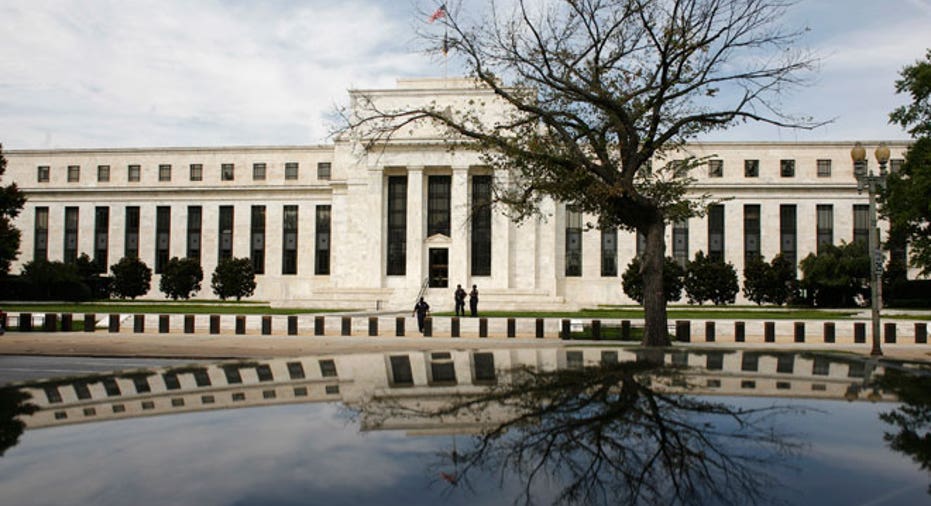The Fed's 2% Problem

While the market was expecting to cheer and another strong jobs report Friday, the Federal Reserve may have other worries. Plunging oil prices and more signs of slowing economic growth may make it very difficult for the Fed to raise interest rates, especially as it seems the globe could be headed back into a deflationary slowdown. The Federal Reserve has tried to show optimism that its target Inflation rate of 2% will happen by the time it gets ready to raise rates but looking at the price of oil, copper and other commodities -- that is looking very unlikely. The U.S. inflation rate is at a very minimal 1.32%, compared to 1.66% last month and 1.24% last year. And it has to take a major leap, and the drop in oil prices and gasoline prices had better start a massive spending spree by U.S. consumers if we are going to have any chance of market expectations changing from disinflation to too many dollars chasing too few goods. Those concerns were echoed by Fed Officials yesterday. The Wall Street Journal reported that Federal Reserve Bank of Minneapolis President Narayana Kocherlakota said Thursday the U.S. central bank is taking a big gamble by not acting more forcefully to defend its official 2% inflation target. Noting that inflation has fallen short of the target for two and half years, Mr. Kocherlakota said financial markets are taking notice of the Fed’s lack of action to push price pressures back up to levels the central bank says it officially desires. If this situation persists, he warned the public may lose confidence that the Fed is willing to take the steps necessary to push inflation higher. The Fed “has not provided sufficient stimulus to hit its inflation target,” Persistent deviations from the 2% target may weaken beliefs the Fed really wants inflation on target, Mr. Kocherlakota said. Market-based measures of future inflation are taking heed of the Fed’s lack of “substantial policy action” to falling inflation expectations, he said. The Fed’s “lack of response,” Mr. Kocherlakota said, “creates additional downside risk to the credibility of the 2% inflation target.” Federal Reserve Bank of Chicago President Charles Evans took it a step further when he said that the U.S. might not hit the Fed’s target inflation rate until 2018 and we should not think of raining rates until 2016. In Germany factory output fell 0.1 percent from October, mainly on the back of energy output, which fell 2.4 percent in November. In the UK, manufacturing output rose 0.7% from October and 2.7% on the year -- and while the headline number beat expectations a drop in oil productions slowed output in fourth quarter raising concerns of a wider economic slowdown going forward. This is as the market is trying to get a sense on how the drop in oil prices could adversely impact oil production. Dow Jones reported that “as North America's rig count has been falling of late amid the slump in oil prices, things remained pretty steady overseas," says Baker Hughes (BHI) in its monthly count report. The oilfield-drilling firm, whose closely watched weekly data are due at 1pm, says international rigs were down 11 from November and 22 from December 2013 at 1,313, amid onshore declines. BHI notes the average U.S. rig count fell 43 on-month, but rose 111 on-year to 1,882. In Canada, the total was 375, down 46 and up 3, respectively. Still, it looks like the oil is trying to bottom as the stochastic set up may entice some to be brave enough to think that this may be it. Some of that confidence is coming because of the possibility that the U.S. will be exporting more crude oil soon. After turning lower late in the session, crude oil saw a sharp rebound after Dow Jones reported that Mexican state-run oil giant Petroleos Mexicanos had requested permission from the U.S. Commerce Department to import light crude to Mexico from the U.S., with the aim of improving output at its Mexican refineries. The significant increase of light crude production in the U.S. presents an opportunity to mix that oil with Mexican heavy crude, and thus boost refining efficiency in Mexico, the company known as Pemex said. Pemex anticipates that it could import up to 100,000 barrels a day of light crude and condensates under the proposal, which it calls a "swap." Of course it is unlikely that that will be enough to bottom the crude, unless the market gets a lot a help from today’s job report. MarketWatch Says that I am a must follow in 2015 on Twitter! http://www.marketwatch.com/(S(rnrsydaynixa5x55oiibxm45))/story/these-twitter-pros-are-2015s-must-follows-2014-12-19?pagenumber=2.



















